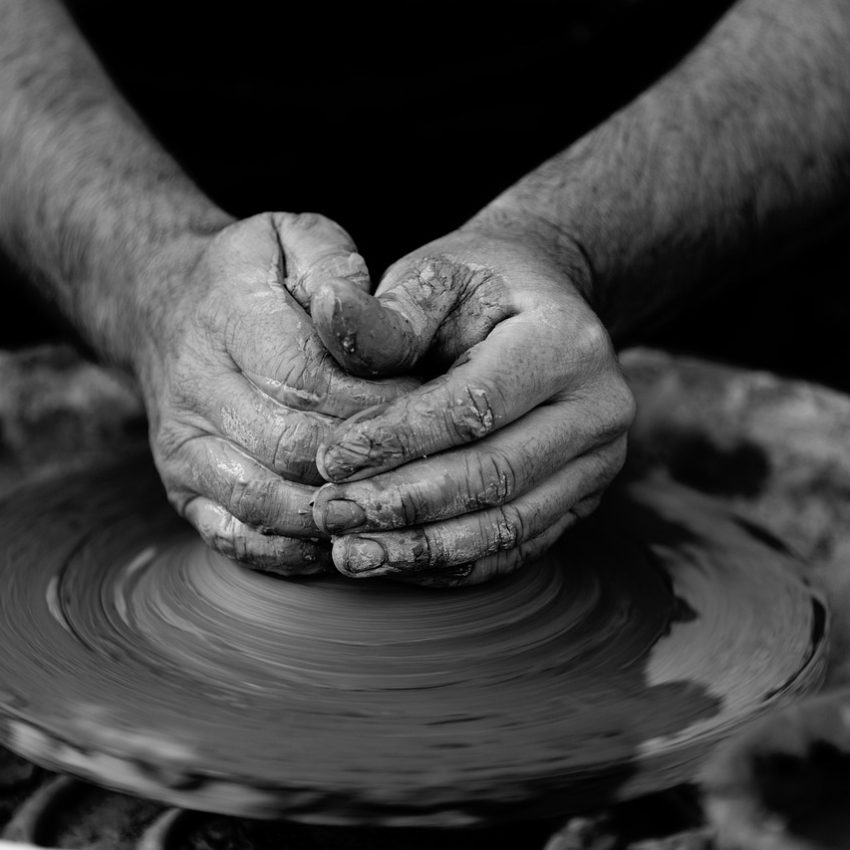The Intriguing Life of Jackson Pollock
Step into the captivating world of Jackson Pollock, an enigmatic artist who reshaped the very essence of modern art with his innovative genius.
Through a kaleidoscope of colours and strokes, Pollock’s creations beckon us to delve deeper into abstract expressionism, inviting contemplation and wonder like never before, similar to the effect of Pollock’s drip paintings.
His brush was not merely a tool but a conduit for emotions and ideas that transcended traditional boundaries, leaving behind a legacy that continues to inspire and intrigue art enthusiasts worldwide, demonstrating why Pollock painted with such enthusiasm.
Jackson Pollock’s contributions to the art world are revolutionary and a testament to human creativity at its most boundless.
From bold experimentation that defied conventions to an unwavering dedication to pushing artistic frontiers, he imbued each piece with raw energy and emotion that resonates with audiences even today.
As we unravel the layers of his life and creative journey, we unravel the mysteries behind one of modern art’s most enigmatic figures, discovering a tapestry woven with passion, struggle, triumph, and timeless beauty.
Join us on this exploration into the intriguing life of Pollock – where every brushstroke tells a story waiting to be unveiled, interwoven with the legacy of Peggy Guggenheim and the evolution of American art.
Early Life and Influences
Paul Jackson Pollock, born on January 28, 1912, and passing away on August 11, 1956, was a prominent American painter renowned for his pivotal role in the abstract expressionist movement.
His innovative “drip technique” involved pouring or splashing household paint onto a horizontal canvas, allowing him to approach and paint his works from various perspectives.
Termed “all-over painting” and “action painting,” this method saw Pollock engaging his entire body in a dynamic, almost dance-like manner, covering the canvas entirely.
This radical departure from traditional forms of representation garnered mixed reactions from critics.
While some lauded the immediacy and intensity of his creations, others criticized the perceived randomness of the effects produced.
Pollock’s personal life was marked by reclusiveness and volatility, exacerbated by his ongoing battle with alcoholism.
In 1945, he married fellow artist Lee Krasner, whose influence proved pivotal in shaping his artistic career and lasting legacy.
Tragically, Pollock’s life was cut short at the age of 44 in an alcohol-related single-car collision in East Hampton. Despite his untimely demise, his impact on the art world endured.
Four months after his passing, the Museum of Modern Art (MoMA) in New York City held a memorial retrospective exhibition in his honour.
Subsequently, in 1967, a more comprehensive showcase of his work occurred at the same institution. Further recognition came in 1998 and 1999 with large-scale retrospective exhibitions at MoMA and the Tate in London.
Pollock’s upbringing also played a crucial role in shaping his unconventional approach to art. Raised in a household that encouraged creativity and individuality, he could explore various artistic mediums from a young age.
This environment fostered an experimental spirit within him, evident in his willingness to push boundaries and defy traditional artistic norms.
Additionally, mentors like Thomas Hart Benton, under whom he studied at the Art Students League in New York City, provided invaluable guidance and support that helped hone his craft, cementing his status in American art.
Family ties further enriched Pollock’s artistic sensibilities; his older brother Charles introduced him to Surrealist ideas and techniques later manifested in his signature drip paintings.
The emotional depth evident in pieces like “Autumn Rhythm” is a testament to Pollock’s technical prowess and the emotional intimacy fostered within familial relationships.
These early influences merged to form an artist who transcended mere technique; instead, he channelled raw emotion onto canvas – a radical departure from conventional Western art paradigms, heralding him as a pioneer in American abstract art.
Family
Paul Jackson Pollock was the youngest among five brothers. His parents, Stella May (née McClure) and LeRoy Pollock hailed from Tingley, Iowa, where they studied at Tingley High School.
Stella, known for her skill in dressmaking, proudly upheld her family’s weaving heritage. LeRoy, initially born with the surname McCoy, adopted the name of his neighbours who took him in after losing his parents.
Of Irish and Scots-Irish descent, the Pollocks were Presbyterian, a far cry from the bohemian lifestyle Pollock enjoyed in East Hampton.
LeRoy worked as a farmer before becoming a government land surveyor, necessitating the family’s relocation for various job opportunities.
When Jackson was just ten months old, Stella relocated with her sons to San Diego, marking the end of their time in Cody. Jackson’s upbringing unfolded in Arizona and Chico, California.
Residing in Los Angeles’ Vermont Square neighbourhood, Jackson attended Manual Arts High School, although he faced expulsion, a pattern he had experienced in 1928.
Despite his academic challenges, Pollock’s early life was enriched by his father’s surveying trips, where he delved into Native American culture.
Additionally, he found inspiration in the works of Mexican muralists, notably José Clemente Orozco, whose fresco “Prometheus” he revered as a pinnacle of North American painting.
In 1930, following his older brother Charles, Pollock moved to New York City, an action that would eventually anchor him in the heart of American abstract expressionism.
Both brothers enrolled at the Art Students League, studying under the tutelage of Thomas Hart Benton, a significant regionalist painter.
While Benton’s rural American subject matter did not heavily influence Pollock’s artistic direction, his innovative use of paint and unwavering independence left a profound impression.
During the early 1930s, Pollock embarked on a transformative journey through the Western United States alongside Glen Rounds, a fellow art student, and Benton, their mentor, further shaping his artistic sensibilities.
Artistic Journey: Breaking Boundaries
Jason Pollock’s artistic journey was marked by a relentless pursuit of innovation and a fierce determination to break free from conventional norms.
His bold brushstrokes, unconventional techniques, and revolutionary approach to abstract expressionism challenged the art world’s established standards, positioning him as a trailblazer in American abstract expressionism.
One of his most iconic techniques was “drip painting,” where he would rhythmically drip or pour paint onto large canvases on the floor. This method infused his works with an energy and dynamism that captivated viewers and critics alike.
As Pollock delved deeper into his artistry, his work underwent a remarkable evolution that left an indelible mark on the modern art landscape.
His later pieces’ raw emotional intensity and chaotic energy pushed boundaries and redefined the parameters of what constituted art.
By embracing spontaneity and letting go of traditional forms, Pollock ushered in a new era of freedom in artistic expression.
His innovative use of colour, texture, and movement created visceral experiences for viewers, inviting them to immerse themselves in the depths of his psyche.
Pollock’s fearless experimentation revolutionised abstract expressionism and allowed future artists to explore uncharted territory.
His unconventional methods inspired artists to look beyond established conventions and embrace a more intuitive approach to creation, epitomized by his frenetic dancing style of painting.
Through his groundbreaking techniques, Pollock ignited a spark that ignited a wildfire of creativity within the art world, sparking discussions about authenticity, emotionality, and the very essence of what defines art.
In breaking boundaries with such audacity and conviction, Jackson Pollock secured his place as a visionary whose impact continues to resonate across time and genres, enhancing his reputation as time Pollock progresses.
Psychiatric Treatment
In 1937, Pollock initiated psychiatric treatment to address his struggle with alcoholism.
However, his challenges persisted, culminating in a nervous breakdown the following year. This episode led to his hospitalization for approximately four months.
These experiences profoundly impacted Pollock’s artistic expression. His work transformed into a semiabstract style that reflected his assimilation of motifs from prominent modern artists such as Pablo Picasso, Joan Miró, and the Mexican muralist José Clemente Orozco.
Moreover, Jungian symbolism and the Surrealist exploration of the unconscious influenced Pollock’s artistic journey during this period.
Between 1939 and 1941, he underwent treatment with two successive Jungian psychoanalysts who integrated Pollock’s drawings into their therapy sessions, further shaping his artistic vision and process and marking a pivotal chapter in American abstract art.
Legacy and Impact: Exhibitions
Jason Pollock’s legacy in art reverberates across generations, transcending temporal boundaries to inspire contemporary artists worldwide. His innovative approach to abstract expressionism continues to captivate audiences and influence emerging talents.
Through his fearless experimentation with techniques like drip painting and action painting, Pollock pushed the boundaries of conventional art, paving the way for a new era of artistic exploration.
In museums and galleries around the globe, Jason Pollock’s works remain timeless masterpieces that speak volumes about his creative genius.
The impact of his art can be felt not only in the visual arts but also in literature, music, and other forms of expression that draw inspiration from his daring spirit.
Whether it’s studying the intricate dance of colours in “Autumn Rhythm” or deciphering the chaotic beauty of “Number 1A, 1948,” viewers are continually drawn into a realm where emotions flow freely through abstract shapes and lines.
Even in today’s rapidly changing art scene, Jason Pollock’s work maintains its relevance and power to provoke thought and evoke deep feelings among spectators.
His ability to infuse raw emotion into every brushstroke has set an unmatched authenticity standard in artistry, making his works a highlight of American abstract expressionism.
As artists navigate through evolving trends and styles, they look back at Pollock as a pioneer and a beacon guiding them towards uncharted territories of artistic innovation, often referring to when Pollock revolutionised the art world.
In essence, Jason Pollock’s enduring legacy is not just a chapter in history but an ongoing narrative that inspires creativity across all boundaries.
Jackson Pollock & His Personal Struggles and Triumphs
Jason Pollock’s artistic journey was not without its share of personal struggles, which often served as the fuel that ignited his creativity.
Despite finding fame and recognition in the art world, Pollock grappled with inner demons and battles with alcoholism that cast a shadow over his life.
His struggles with mental health issues and addiction added layers of complexity to his work, infusing it with raw emotion and intensity that captivated viewers.
These personal challenges became intertwined with his artistry, profoundly shaping the depth and resonance of his creations.
Jason Pollock encountered pivotal moments that left an indelible mark on his artistic vision.
From his transformative encounters with influential artists like Thomas Hart Benton to periods of introspection and self-discovery, each experience contributed to the evolution of his unique style, embedding him deeply in the narrative of American art.
The tumultuous events in Pollock’s personal life mirrored the turbulence in his abstract expressionist paintings, creating a deep connection between the artist and his work.
Through these trials and tribulations, Pollock found inspiration, channelling his emotions onto the canvas with unparalleled authenticity.
Despite facing immense challenges, Jason Pollock exhibited remarkable resilience and derelentlessly demonstrated a relentless pursuit of artistic excellence by overcoming obstacles both within himself and—in the external world.
Each triumph – whether in conquering personal demons —or pushing boundaries in the art world – showcased Pollock’s unwavering commitment to his craft.
His ability to transform adversity into artistic innovation is a testament to his strength of character and steadfast passion for creating impactful art that transcended conventional norms.
In celebrating Jason Pollock’s triumphs amidst the turmoil, we gain a deeper appreciation for the man behind the masterpieces.
This soul navigated turbulent seas to leave an enduring legacy in modern art, transforming American abstract expressionism with each brushstroke before Pollock died at age 44.
Through perseverance, self-exploration, and an unyielding spirit, Pollock not only shaped the trajectory of abstract expressionism but also inspired generations of artists to explore their inner worlds through art fearlessly.
The intricacies of his struggles woven into the fabric of his work serve as a poignant reminder that true brilliance often emerges from the depths of human experience.
Behind the Artwork
Delving into the enigmatic world of Jason Pollock’s iconic artworks unveils a realm where abstract forms and emotions intertwine to enchant viewers.
Each splash of paint on his canvases contains a story waiting to be deciphered, offering a glimpse into the artist’s complex psyche.
For instance, in his renowned work “Autumn Rhythm,” layers upon layers of energetic brushstrokes symbolize the dynamism and rhythm of nature itself, inviting viewers to immerse themselves in the whirlwind of colours and shapes.
Decoding the symbolism embedded in Pollock’s paintings is akin to unravelling a mystery; every drip or stroke holds meaning beyond its visual appearance.
His famous technique of dripping paint onto canvases wasn’t merely about randomness but a calculated dance of movement and intention.
The chaotic yet deliberate patterns in pieces like “Convergence” invite speculation on the inner workings of the artist’s mind.
By understanding these subtle nuances, audiences can appreciate the aesthetics and depth of emotion woven within each masterpiece.
The techniques employed by Jason Pollock reveal a meticulous yet spontaneous approach that defined his mesmerising creations, much like his frenetic dancing style.
His method of action painting, characterized by swift movements and intense expressions, captured raw emotions on canvas with unparalleled intensity; for example, in “Number 1A, 1948,” one witnesses how every gesture and flick of paint contributed to the overall composition—a symphony of controlled chaos that epitomizes Pollock’s artistic brilliance.
As viewers explore behind-the-scenes details of his creative process, they gain insight into the innovative methods that set him apart as a visionary maverick in art, including his unique frenetic dancing style of painting.
Influence on the Contemporary Art Scene
Jackson Pollock’s profound influence on the contemporary art scene is undeniable, with a significant presence in every gallery in New York.
His innovative techniques and boundary-breaking approach have paved the way for current art trends and continue to inspire emerging artists worldwide, especially in the realm of Pollock’s drip paintings.
Pollock’s legacy transcends generations, resonating with creatives drawn to his fearless spirit and unconventional methods.
As new artists navigate today’s dynamic art landscape, they see Pollock as a beacon of artistic freedom and experimentation.
His ability to tap into raw emotion and convey it onto canvas has shaped modern abstract expressionism and permeated diverse forms of creative expression, marking him as a pivotal living painter in the United States.
From street art to digital mediums, Pollock’s daring creativity reminds us that true art knows no boundaries. By embracing Pollock’s legacy, contemporary artists honour his vision while forging their paths in the ever-evolving realm of imagination, contributing to the tapestry of American abstract art, notably through Pollock’s drip paintings.
Conclusion
Jackson Pollock, born in Cody, became one of the most influential figures in the American abstract expressionist movement. He transformed the art world with his innovative drip paintings, harnessing the force of his whole body to paint in a frenetic and deeply introspective style. Despite his struggles and untimely death in 1956, Pollock’s legacy endures through his famous paintings, which continue to captivate audiences worldwide.
His work has been celebrated in retrospective exhibitions, including one at the Museum of Modern Art in New York in December 1956, just months after his passing. Pollock’s impact on the art of this century cannot be overstated, as he remains one of the greatest painters in the United States.
From his time with the Federal Art Project to his collaborations with fellow artists like Lee Krasner and mentor Thomas Hart Benton, Pollock’s contributions to the art world are immeasurable. As art critic Clement Greenberg once noted, Pollock is best known for his revolutionary approach to drawing and painting, which pushed the boundaries of traditional art movements.
Today, his work can be found in esteemed institutions such as the National Gallery of Art, a testament to his enduring influence on modern art. Through his groundbreaking techniques and unwavering dedication to his craft, Jackson Pollock cemented his place as a visionary artist whose legacy continues to inspire generations of artists to come.





